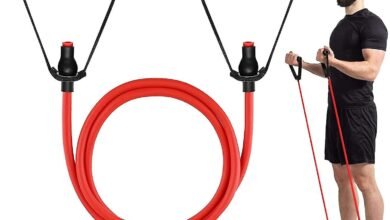How to Successfully Import Massage Tables to Canada: A Comprehensive Guide for Businesses and Practitioners

The wellness and therapeutic industries in Canada are growing at a remarkable pace, and with them comes a rising demand for high-quality equipment. One of the most sought-after items is the massage table—used widely in clinics, spas, wellness centers, and even home practices. While many local options are available, professionals and distributors are increasingly choosing to import massage tables to Canada for a wider variety, better features, or more competitive pricing.
However, importing massage tables isn’t as straightforward as placing an online order. It involves several legal, logistical, and regulatory steps. This article is your complete guide to understanding how to legally and efficiently import massage tables to Canada whether you’re a business, reseller, or an independent therapist looking for international quality.
Why Import Massage Tables to Canada?
Before diving into the logistics, it’s worth understanding why Canadian businesses and individuals consider importing massage tables in the first place.
🌍 1. Greater Variety
International manufacturers offer a broader range of models, including motorized electric tables, height-adjustable designs, heated surfaces, and ergonomic contours that may not be locally available.
💰 2. Competitive Pricing
Even with customs fees and shipping, importing directly from countries like China, the U.S., or Germany may still be cheaper than buying through Canadian distributors.
🌟 3. Premium Features
Many overseas brands integrate advanced features like Bluetooth controls, silent lift motors, memory foam padding, and antimicrobial upholstery—all of which can add value to your practice.
🤝 4. Private Label Opportunities
If you’re a spa equipment reseller or wholesaler, importing allows you to offer custom-branded tables or develop exclusive designs tailored for the Canadian market.
See also: Charge Capture Audit: Key to Improving Healthcare Revenue and Compliance
Step-by-Step Guide to Import Massage Tables to Canada
✅ Step 1: Identify the Right Supplier
Research suppliers who have experience shipping to Canada. Look for:
- Verified international trade experience
- Certifications (like CE, FDA, ISO, or CSA for North America)
- Clear communication and order customization options
Recommended platforms to find suppliers:
- Alibaba (ensure Gold Supplier status)
- Global Sources
- TradeIndia (for premium wooden designs)
- U.S.-based brands like Earthlite or Custom Craftworks
✅ Step 2: Confirm Product Specifications and Compliance
Before you import massage tables to Canada, ensure they meet Canadian safety and quality standards, especially if they are electrically powered. Requirements include:
- CSA Certification: Required for electric massage tables to comply with Canadian electrical standards.
- Proper Voltage (120V, 60Hz): Avoid models that require adapters or power converters.
- Material Safety: Check that upholstery is free from harmful chemicals and meets flammability standards.
- Weight Capacity & Durability: Tables should support at least 250–300 kg for professional use.
Request product datasheets and safety certificates from the manufacturer before proceeding.
Step 3: Understand Canadian Import Regulations
Canada Border Services Agency (CBSA) and Health Canada may have specific rules for importing professional equipment. Follow these guidelines:
📦 HS Code and Tariff Classification
Massage tables fall under:
- HS Code 9402.90: Medical, surgical, dental or veterinary furniture.
Tariffs may range from 0% to 9%, depending on the country of origin and trade agreements (e.g., CUSMA for U.S. and Mexico).
🛃 Import Permits (if applicable)
Generally, massage tables don’t require a special import permit unless they are medical-grade or include diagnostic components. Still, check with Health Canada if the equipment includes electronic therapy devices.
Step 4: Arrange International Shipping
Shipping options when you import massage tables to Canada:
🚢 Sea Freight (Most Common for Bulk Orders)
- Best for large or multiple tables
- Cost-effective but slower (3–6 weeks)
- Delivered via container to port (e.g., Vancouver, Montreal)
✈️ Air Freight (Faster, Costlier)
- Suitable for small orders or premium tables
- Delivery within 5–10 business days
- Requires careful packaging to prevent damage
🚛 Use a Freight Forwarder
Hiring a Canada-based freight forwarder can simplify:
- Customs clearance
- Delivery to your address
- Duty and tax estimates
Top freight forwarders in Canada include DHL Global Forwarding, Kuehne + Nagel, and Livingston International.
Step 5: Pay Import Duties and Taxes
After your massage tables arrive in Canada, you must pay:
- GST/HST: Goods and Services Tax or Harmonized Sales Tax (5–15% depending on province)
- Import Duties: Varies by origin and classification
- Brokerage Fees: Paid to customs brokers or courier companies for clearing shipments
Step 6: Delivery and Inspection
Once customs clearance is complete, ensure:
- Packaging is intact
- All components (motors, controllers, headrests, etc.) are included
- Power connections are safe and compatible
- CSA certification is clearly marked for electric models
Document any issues immediately with photographs and contact the supplier if replacements or refunds are necessary.
Tips for a Smooth Import Experience
📝 Request a Pro Forma Invoice
This will outline the total cost, shipping terms, lead time, and product descriptions. It’s essential for customs paperwork.
🔍 Verify the Supplier’s Background
Check for reviews, trade history, and complaint records on international trade platforms. Avoid middlemen with unclear operations.
Final Thoughts
If you’re planning to import massage tables to Canada, preparation is key. Whether you’re furnishing a new spa, upgrading your clinic, or expanding your product catalog as a distributor, importing gives you access to global-quality equipment that may not be readily available domestically.
However, importing involves navigating compliance, logistics, and customs procedures. By following the steps outlined in this guide—choosing reliable suppliers, verifying certifications, understanding tax obligations, and planning logistics—you can build a seamless importing strategy that adds value to your business.
Remember: Cutting corners with non-compliant or unsafe equipment might save you money upfront but could cost you far more in the long run. Choose smart, certified, and strategic imports—and let your Canadian wellness business thrive.





